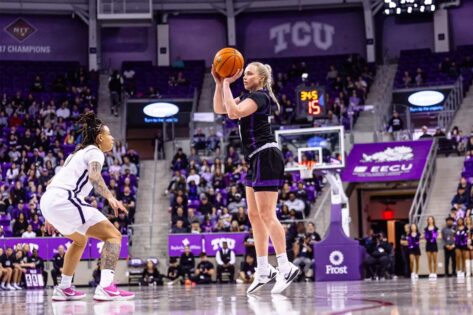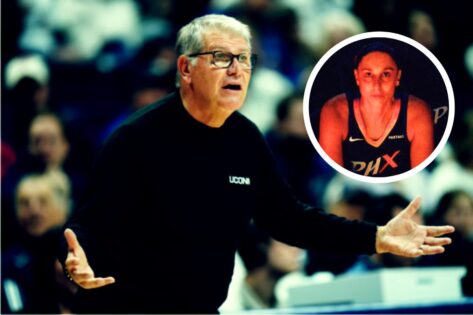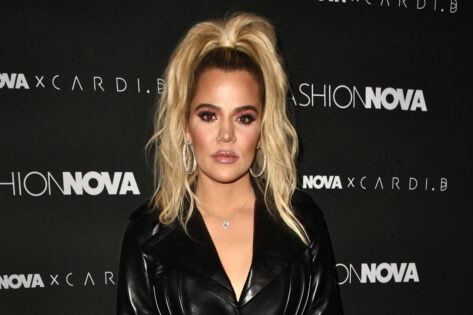NASCAR legends like Kevin Harvick’s evolution from motorsport to TV analyst has been as smooth as it has been emotive. In his first foray into broadcasting in 2015, Harvick was thrust into a real-time crisis: Kyle Busch’s brutal crash in the Xfinity Series at Daytona came with just nine laps left, and Harvick, still preparing to race the next day, offered a calm, detailed insight. By his full-time transition after retiring in 2023, Harvick described the shift as a release, “closing the page on the driver piece… there was no stress. There was no anxiety.” Now, firmly settled in Fox’s booth alongside Mike Joy and Clint Bowyer, he treats each race broadcast with the same precision and intensity as a race. But Harvick isn’t the only driver-turned-broadcaster who discovered a new chapter balancing emotion, introspection, and purpose away from the track.
Jamie McMurray’s pivot to television was equally rooted in introspection and sparked far from the roar of engines. Retirement, however, wasn’t simply stepping off the gas; it was evolving into new challenges. McMurray took to long-distance running, completing his first marathon in 2017 with a time of 3:25:14. At the same time, he made his way onto Fox Sports’ NASCAR coverage, beginning in 2019 with NASCAR RaceDay and Race Hub, and later expanding his role to include pre- and in-race studio analysis. By 2025, he had added CW Sports’ Xfinity broadcast booth to his portfolio as well. But, recently, he confessed the ’emotional’ reason behind such a shift.
Jamie McMurray’s NASCAR transformation
On the latest episode of Kevin Harvick’s Happy Hour podcast, Jamie McMurray offered a candid account of the factors and moments that led him to step away from driving and embrace a career in broadcasting. “I remember being on a fishing trip for Cessna in Canada, and I was bunked with Dierks Bentley… And I remember laying there with him, and we talked about what we would do when our careers were over,” McMurray reminisced. “And I was like, ‘Dierks, I have every intention when I’m done driving to disappear and people never see me again.’” This desire for retreat from the spotlight is a sentiment shared by many athletes who have endured years of relentless pressure and public scrutiny. McMurray, a 2010 Daytona 500 winner and veteran of hundreds of Cup Series starts, had experienced the physical and mental exhaustion of the NASCAR lifestyle, with its constant travel, media obligations, and the pressure to perform at an elite level every single weekend.
However, the reality of stepping away brought with it a complex mixture of emotions. McMurray admitted, “But honestly, I wasn’t ready to quit driving. In the moment, I’m like, ‘I don’t want to stop. I still want to do this.’ But at the same time, there was this huge sigh of relief when it was over. I was like, ‘thank God.’ I realize how stressful it is and how taxing it is on you and your family.” This sentiment has been echoed by countless veterans of the sport, including legends like Dale Earnhardt Jr., who spoke openly about the mental health struggles associated with the constant stress. McMurray then recalled a light-hearted, enjoyable day working at the Fox Studio in Charlotte, saying, “Fox was opening up the studio where we are, and they were going to have a full-time pre-race guy that was going to stay at the studio,” he continued. “And I came in, and I did the hub a couple times with Adam and Shannon, and I had fun… And I’m like, it’s pretty fun. I left laughing, and I’m like, I kind of enjoyed that.”
The unexpected appeal of a television career for a former driver, as both McMurray and Harvick agreed, lay in the surprising return of “teamwork” that they had so desperately missed. McMurray explained how TV reopened a creative outlet for him. “I missed that in racing, and TV opened that up to me again, because you have a meeting on Tuesday,” said McMurray. “You talk about, ‘well, what are we going to talk about this week?’ And even though TV is subjective, and there’s no winner or loser, when the shows are over, ‘man, I think that, based on what we said on Tuesday, we implemented that, did a really good job.’” Harvick, already known for his fierce competitiveness and problem-solving nature, wholeheartedly agreed, adding, “I think that the team aspect of it is something that a lot of people don’t realize. When you’re driving, it’s all about the team. You’re a problem solver… It allows you to be a part of the sport and not have all the pressure. For me, the relief and pressure has been so refreshing.”
DOVER, DE – MAY 14: Jamie McMurray, driver of the #1 Bass Pro Shops Chevrolet, stands next to his car on the grid during qualifying for the NASCAR Sprint Cup Series Autism Speaks 400 at Dover International Speedway on May 14, 2010 in Dover, Delaware. (Photo by Jeff Zelevansky/Getty Images for NASCAR)g
The ultimate liberation of leaving the driving world, however, was the complete removal of stakes and pressure. McMurray drew a powerful contrast in a conversation he had with Aric Almirola, who was still actively driving. “I’m like, Aric, here’s the thing, ‘when you’re driving and you have a flat tire with five laps to go, your week is over. You’re just like, you just want to vomit, right?’ I was like, ‘Aric, when they throw the green flag today, if they all blow up on the first lap, I don’t care.’ I’m like, I’m going to go home. It’s not going to change my life at all. And you can’t put a price on that,” he concluded.
Ultimately, the journey from professional driver to broadcaster is a nuanced one, born not just from the end of one career but from the beginning of another that offers a unique brand of fulfillment. The team-based problem-solving, the camaraderie, and the shared goals of producing a compelling broadcast provided a new outlet for both Harvick and McMurray’s competitive spirit, even after retirement. But not every transition is smooth.
The hidden toll of NASCAR’s long season
The Easter break in April 2025 offered a rare breath in NASCAR’s relentless February-to-November calendar, but for Fox’s Kaitlyn Vincie, it underscored how little time she has to balance her career with motherhood. “It’s crazy that the thing that brings you together [racing] can divide you in the end,” she told Samantha Busch on the Certified Oversharer podcast. The demands aren’t just on the drivers; road crews, pit staff, and reporters face the same cross-country grind for ten straight months, often for modest pay.
Her husband, Blake Harris, crew chief for Hendrick Motorsports‘ No. 48, works an equally brutal schedule. “Separate hotels, separate rental cars, separate schedule,” became the norm. Vincie believes NASCAR has done little to support families living inside this pressure cooker, saying, “One of the things too, that I wish the sport offered… is more resources for families. Like family counselors, therapists, a network of child care providers… because it’s just a little bit unreasonable.”
Yet despite the strain, Vincie insists their split is not born of resentment. “Both him and I care so much about them [the children]… Him and I have an amazing relationship. You know, a lot of people would look at that and be like, really? But we do. We speak every day. We’re still great friends,” she explained. The challenge is systemic, not personal, a logistical nightmare woven into the sport’s very DNA.
The post FOX Broadcaster Confesses ‘Emotional’ Reason Behind Coming Back to NASCAR After Retirement appeared first on EssentiallySports.



